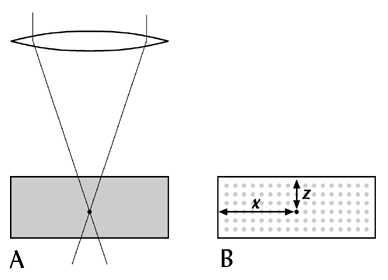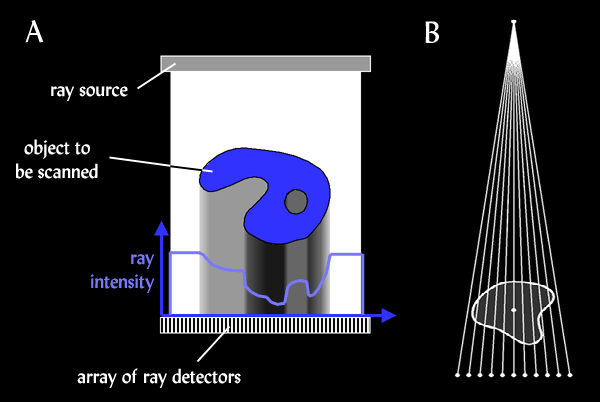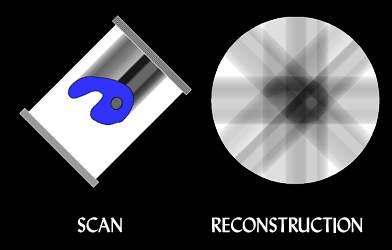A definition of OPT and tomograpy
Choice of the name Optical Projection Tomography
Optical is necessary as there are many forms projection tomography which use other forms of ray (X-rays, electrons beam, positrons).
Projection is necessary for a number of reasons:
- It distinguishes its mechanism from the principle of section tomography (described below).
- It distinguishes its name from Diffuse Optical Tomography (DOT) and simple Optical Tomography (OT), both of which refer to a newly developing medical imaging technique which specifically uses near-infrared wavelengths.
- It distinguishes its name from Optical Coherence Tomography (OCT).
A definition of tomography
a definition - "Geometric tomography is the area of mathematics dealing with the retrieval of information about a geometric object from data about its sections, or projections, or both"
Tomography can therefore be split into two categories, depending on whether the data used are sections or projections.
Section tomography In section tomography the imaging device gathers information which corresponds to a section though the specimen. A section in this case may be a 2-D plane, a 1-D line or even a 0-D point which "cuts" through the specimen.

The important feature about sections is that the information gathered is known to refer to a specific 3-D position within the specimen. For example, in confocal microscopy, light which is focused onto the light detector is known to have come from a specific focal point below the objective lens.

Projection Tomography
Obtaining the projection of an object essentially involves removing one spatial dimension from the object. It is like a quantitative shadow, such that where the object is thicker the shadow is darker. This always removes a spatial dimension, because a 3-dimensional object will give a 2-D shadow, and, as in the figure below, a 2-D object will give a 1-D shadow. In this figure the absorption of rays has been emphasised by showing the path of reduced transmitted light as it exits the specimen. However, the shadow itself is a single line of values, best represented by the blue graph which indicates how much light has been transmitted through the specimen
A single shadow (projection) does not contain enough information to recreate the entire object. However, a series of projections taken at different angles through the object does indeed contain the right information. The projections can be introduced into a reconstruction scheme, one-by-one, using an approach called back-projection. In conjunction with a mathematical formula called the Radon transform, this can accurately recreate the original geometric information. (J. Radon was the first person to discover this relationship between objects and their projections, in 1885).





